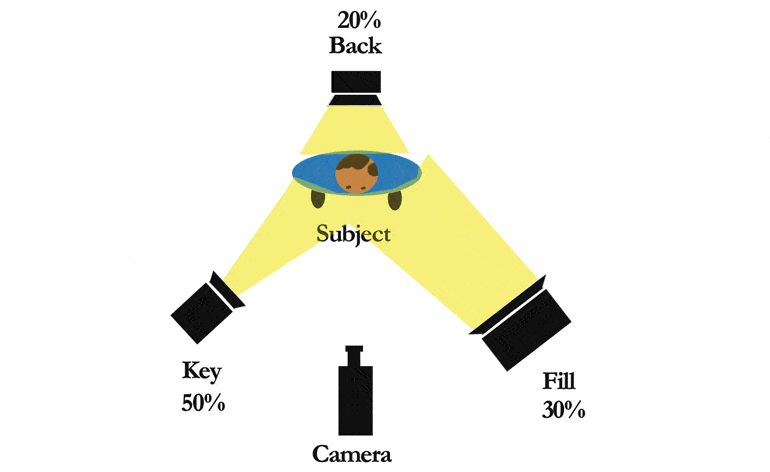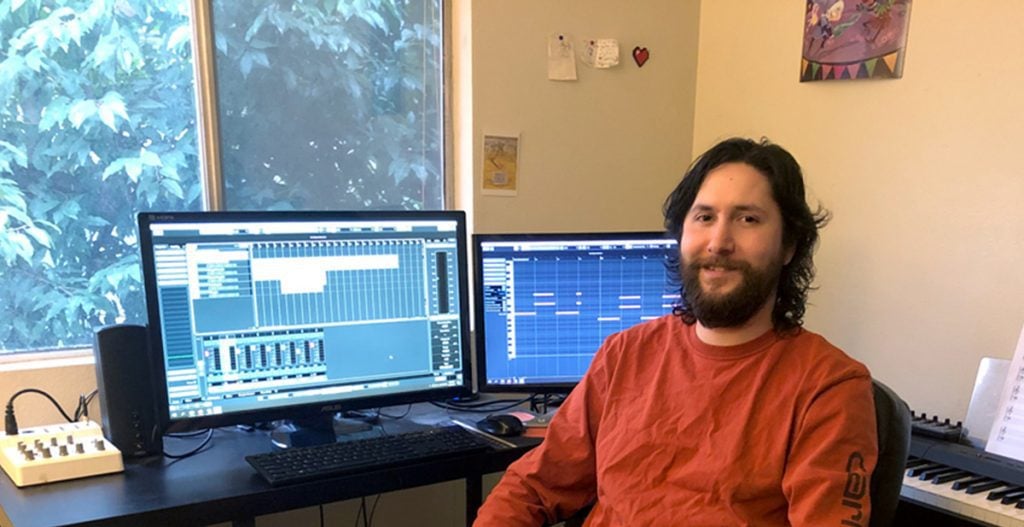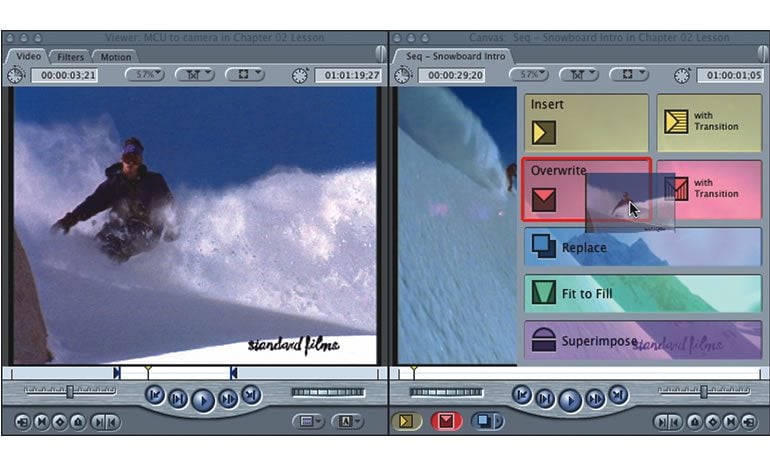A Conversation with Stephen B. Ward

STUDENTFILMMAKERS: How have you seen music technologies change and evolve over the years?
Stephen B. Ward: As a musician, I’ve been recording and working professionally with audio technology since the late 1970s. Over that career, I’ve seen first-hand how the music industry moved from analog 24-track tape recorders, to digital recorders, to software-based recording on the computer. Over that same period, I’ve seen film soundtracks move from sprocketed “mag” tape, physically synchronized to the film stock on a Moviola editing bed, to multitrack tape decks synchronized to video via SMPTE time code, to hard disk nonlinear-editing systems like Final Cut. That’s all be spurred by two innovations, a move to digital audio and video media and the personal computer.
At the high end of the budget spectrum, there will always be a place for shooting on film stock or recording on analog tape, but I think the ease and flexibility of computer-based systems make the old ways of working obsolete, or at best, a luxury. On the plus side, the low cost of computer-based systems has greatly democratized the process of making films and of scoring for films. As a result, we are hearing and seeing great work from traditionally underrepresented directors and composers.
STUDENTFILMMAKERS: In reference to music in film, what is important? How should music be utilized in film?
Stephen B. Ward: Unheard Melodies, by Claudia Gorbman, profoundly affected my thinking about how film music functions. Of course, there will be times when music or music-making is diegetic and therefore belongs in the film’s story-world, but for non-diegetic score music, she posed that it should be always invisible and therefore subordinate to the film’s narrative elements such as visuals, dialog, and sound effects. A film composer should help move a film’s narrative forward without drawing the viewer’s attention to the music. If you’re doing that well, there are four main uses for film music: conveying an emotion to the viewer, cuing narrative elements, providing continuity between scenes, and unifying the film.
Music can create any kind of emotion—mystery, triumph, anxiety or contentment, for example. A good score helps the viewer understand the subjective emotions a character feels in response to narrative events, and it let us “get inside their head.” It can also offer an objective comment that represents the director’s vision of what the film has to say. In either case, the score is letting the viewer know how they should feel about the film’s events. Very often, the score aligns with what you see, but it’s not uncommon for the score to provide a counterpoint to the visual; in a climactic battle scene, the score could emphasize the action and heroism of the characters, but the score could also play a slow dirge that reminds the audience of the human costs of war. It all comes back to what the film is trying to say and the mood the music should convey.
Score can have a strictly utilitarian function as a narrative cue. We need music in our opening title sequence to help our audience formally transition from their real-life experience to an introduction of the general mood and setting of the film—before the story even begins. That helps the audience begin to suspend their disbelief. The end title music has a similar function: even though the film’s narrative is over at that point, the score will sustain the film’s mood while the end titles play, the lights come up, and the audience gradually returns to real life. Beyond formal demarcations, music can also be a really useful shorthand for indicating a scene’s location, time of day, historical period, or even particular characters. A ukulele would tell us a beach scene is set in Hawaii, not Coney Island. As humans, we are hardwired for stories, so we are always trying to understand how what we hear musically connects with what we are seeing onscreen. With the best film music, that process of finding connection happens subconsciously.
Another utilitarian use is to provide continuity by using film music to fill the gaps and to smooth out the editing of a film. It is very useful between scenes, especially when there is a flashback or flashforward in time. Whenever you have a montage sequence to show elapsed time, or when there is a parallel action sequence that cuts between two scenes, the film practically begs for music to help pull the editing together and smooth out the juxtapositions of different shots. As a composer, I always look for long stretches without dialog as places to propel the story via music.
The other use Gorbman discusses is using musical themes as a way of unifying a film. You see this all over the Star Wars series. There are themes for characters, such as Luke Skywalker, Han & Leia, and Darth Vader, but there are also themes for ideas, like “peril” and “The Force.” There are some films that are almost monothematic in the way they use a musical idea almost as though it were a character on its own—Casablanca and Laura leap to mind—but it doesn’t have to be heavy handed. When we first see Norma Desmond in Sunset Boulevard, we hear a musical theme that we come to associate with her. As we witness Norma’s eventual decline into mental illness over the course of the film, that theme morphs into something twisted and garish. Another way music can unify a film is to simply connect events that occurred earlier in a film with those occurring at a later point. Similarly, by combining two characters’ themes in the same piece of music, we can connect them musically to reflect how they are connected in the narrative. Great films use musical themes and motifs repeatedly throughout the film as connective tissue.
Of course, film music does not need to be composed for the film. There are many examples of popular songs, or pieces from the Classical repertoire, used as effective film music. I think that the films of Martin Scorsese and Quentin Tarantino do this particularly well. In that case, music will usually require some editing to fit the scene—although with a montage or with animation it can be the other way around—but a good music supervisor or editor can create a score that is just as thoughtful and supportive of the film’s narrative as one from a film composer.
STUDENTFILMMAKERS: If you could share your Top 3 Tips on Creating Electronic Music, what would they be? By the way, what are your favorite tools and software applications?
Stephen B. Ward: I’m a full-time educator, and it’s hard for me to turn around an entire film score in a week or two, so I tend to take on low-budget or no-budget student films when I can. While I certainly have written film music for various Classical, Jazz and Pop music ensembles, the budget limitations mean that I am usually composing the score on a computer.
There are lots of sampled instruments available to create “realistic” orchestral-style scores. I’ve studied orchestration, so I know what traditional orchestral instruments can and cannot do, and I can mix a score to create a reasonable facsimile of an orchestra in a concert hall. But you can also get very creative with electronic instruments to create scores that function in similar ways to traditional scores, but with new sonic textures. I love exploring that and it can work really well when the film addresses extreme emotional states or is set in the future.
To be honest, I am a bit “platform agnostic,” in that I will choose the platform depending on what the narrative needs from the music. For electronic scores, I generally start the bulk of composing work in Reason, which I love for its wide array of synthesis and sampling instruments. I often use Ableton Live for its flexibility to experiment with and reorganize those musical ideas. If I am shooting for something more abstract, I use Cycling 74’s Max/MSP software to make purpose-built instruments, audio processors and compositional algorithms from scratch. I also have an analog modular synthesizer rig that I use to create musical textures, sequences and sonic elements that I will incorporate into other platforms. On some films I have had multiple roles. If I do audio post-production, such as editing dialog or sound effects, I’ll probably work in Avid’s Pro Tools software for its precision to work with frame-accurate timings. If it’s a lot of cues with written parts for musicians, I’ll transfer everything to scoring software like Finale or Sibelius.
Tip # 1: Before I begin writing specific cues, I like to sketch musical themes for the main characters, big ideas and major events of the film.
At this point, I should have a very good idea of what the director is looking for, including the general musical genre and style for the score. I scored a Frontline/PBS documentary about juvenile delinquents doing hard time for serious crimes, including murder; I chose a sonic palette of “hard” and metallic instruments, percussion and sound effect elements to score with. I identified four instruments to identify with each of the four featured characters. Additionally, because the characters were doing time, I chose to score most of the cues at 120 beats-per-minute and use repeating delays to suggest a ticking clock and the passage of time. Was that approach heavy-handed or overly intellectual? Perhaps, but it also gave me a hook to hang the musical ideas on, and an entry point into the film before I’d even scored a particular scene. As a composer, you may have an intellectual rationale that justifies a particular musical decision, but your audience is simply going to react to the music you write without grasping the rationale.
Tip # 2: In every case, when I spot a film cue, I start by defining the right tempo for the cue.
That can help define the exact musical genre, rhythm, and direction for the music. Does it need to pause, speed up or slow down? Once I have worked all of that out, I’ll lay out the music as a series of empty bars and mark where the inflection points of the scene are and where I need to avoid stepping on dialog. Does the character change? Is there a moment of insight? Do they react to something? With that all plotted out, my job as composer is to simply fit the music in. If I’ve prepared well, I draw on the themes I’ve created for the characters, ideas and events and the cue practically writes itself.
Tip # 3: Music, like film itself, is a temporal art form.
It exists in a horizontal dimension, as a series of events that build or dissipate tension over time. It also exists in a vertical dimension, as layers of notes and sounds, from low to high, that create a sonic texture at any one moment. As a composer, your job is to organize the layers of sound over time. With such a broad definition of music, you are free to write a score that drops and adds bits as needed to fit the edited film. A seven-bar musical theme might seem really weird in a concert piece but works perfectly against the film. Similarly, a cue might pause for eleven beats before resuming. It doesn’t have to “make sense” musically if it supports the action and dialog in the film. Likewise, a cue does not need to end with a “proper” musical resolution; often the plot dictates otherwise. So, I guess I would say let the film tell you what the music needs to do.
I am a huge fan of Bernard Herrmann, who composed all of those classic Hitchcock scores of the late 1950s and early 1960s. He wrote scores based on small motivic ideas and was able to manipulate these simple malleable musical materials into longer cues through repetition and variation. A long theme, like the one John Williams wrote for Indiana Jones and the Raiders of the Lost Ark is great for a particular type of film—and Williams is the master of making long themes work as film music—but I find in my own work, small motifs are more flexible and this makes it easier to write a cue that follows the film.
STUDENTFILMMAKERS: What advice can you share with students and first-time filmmakers on collaborating with film composers on their thesis films and start-up film projects?
Stephen B. Ward: Every person who works on a film, from director to propmaker to gaffer, is helping to tell the story. My number one piece of advice for a composer is to thoroughly understand the script. For each scene or sequence in the film that has a music cue, a composer must know what the characters are feeling, what’s happened in the film’s plot up to this point, and in some cases, what events will follow that scene. That deep understanding has to go beyond the page. A character who drives a car must have a job. What kind of job? Do they love their work, or do they hate it? A lot of times you have to infer a character’s backstory if it’s not directly stated in the script. That exercise is really useful, however, because it adds richness and texture to how you cast the music. At the end of the day, you have to check your own ego and serve the film by writing the music it needs.
The second point, and it’s really just an extension of the first, is to develop a strong channel of communication with the film’s director. Ultimately, it’s the director’s film and a composer must fully understand what the director wants to get across with each cue. The initial spotting session is critical, and you need to record via notebook or audio every thought the director shares. I’m not shy about asking lots of questions. If I score cues without fully understanding what a director wants them to convey, those are the ones that require major rewrites, and that can weaken the director’s confidence in you. On the other hand, when you are on the same page together, your music empowers the director to tell a story that much more effectively.
Often on a spotting session, the director and the composer will identify places in the film where there should be music, but the conversation needs to go further than that. What kind of music does the scene need? When exactly should the music enter and exit the scene? Should that entrance be audible to emphasize the action, or should it enter “inaudibly”—masked by action, dialog or sound effects—to hide the entrance? What tempo should the music be? Which music genres works best for the film? These are the important questions a composer really needs to answer before she can score a scene. So, a strongly collaborative relationship between composer and director is essential, and asking all the right questions fosters that.
It’s important to keep in mind that a director is hiring a composer who has musical expertise that the director generally does not have. That relationship requires the director to entrust the film to the composer and to have faith in the composer’s ability to bring the director’s vision of their film to fruition. In a lot of ways, it is a relationship that’s as important to the film as a director’s relationship with a cinematographer, or the film’s editor, but unlike those collaborations, the actual composition and arrangement of the cues is generally done by the composer working alone. That’s why it’s so important that the composer and director communicate effectively and fully before the cue is written. When that collaboration works well, the music is right for the film, the score stays on schedule, and the partnership is both satisfying and enduring.






